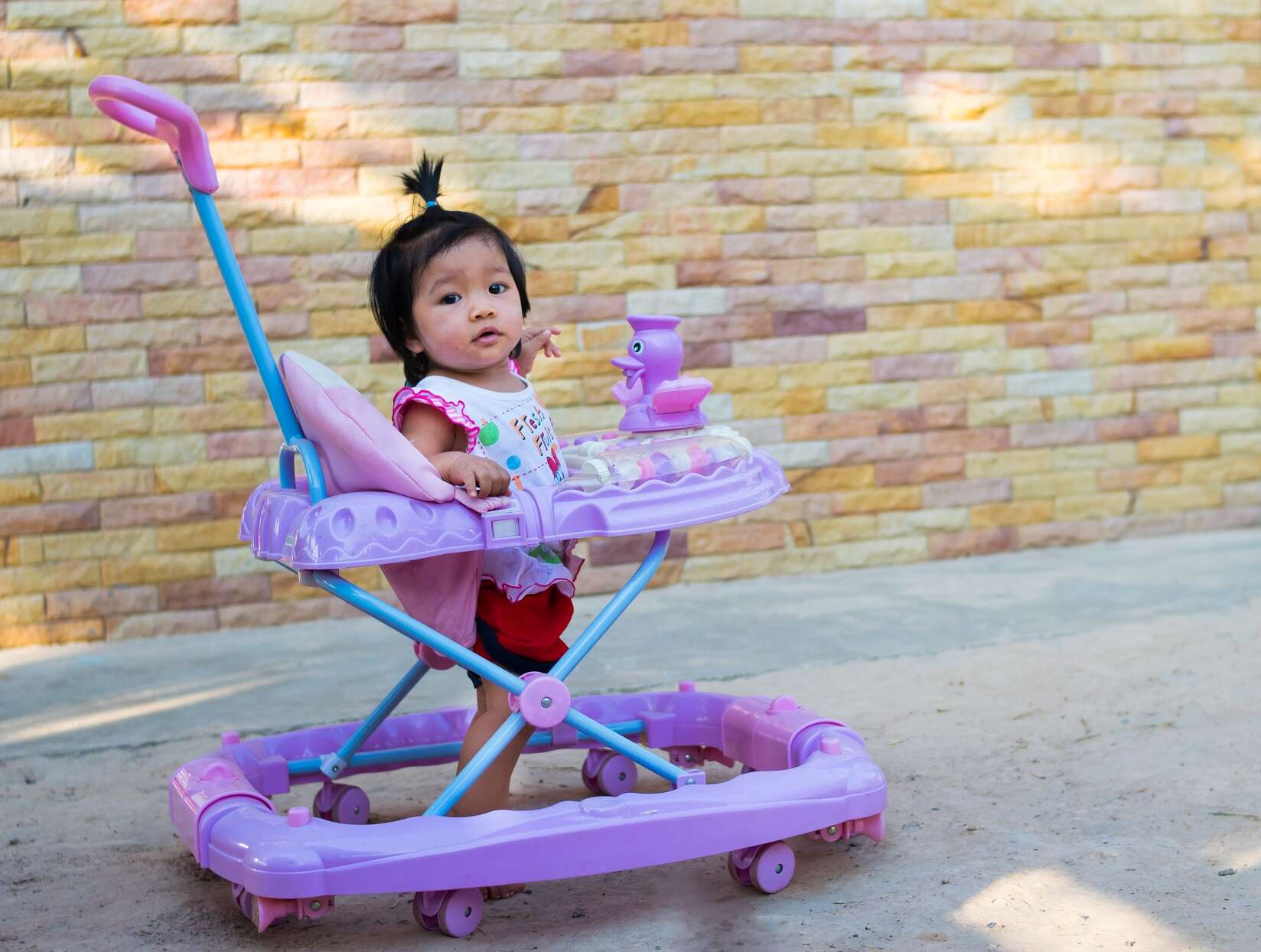Can I Put My 3 Month Old on a Walker?
There is no specific age set for your child to start using a walker. However, as your baby grows to take the first steps, it signifies independence. You need to help them in their path of freedom and discovery by buying the walker.
Can I Put My 3 Month Old on a Walker?
Generally, walkers are designed for babies aged between 4 months and 16 months. Importantly, before providing a walker to your child, you need to ensure they have good head and neck support. Their feet should also be able to touch the floor adequately.
In most cases, a three-month-old baby might have or not have attained the head support milestone. Therefore it’s important to delay the walker until four months when you’re sure that the milestone is wholly achieved.
Therefore, putting your three-month-old baby in a walker is not recommended. The reasons given are, first, walkers are meant for children aged four months to 16 months. Secondly, ultimate head support is paramount to ensure your child uses the worker effectively without any problems. There is nothing wrong with putting your three-month-old baby with good head support on a walker.
Importance of Baby Walkers
- Engagement and Proper Brain Development
To keep the infant-occupied and interested, baby walkers are equipped with simple toys. They’re designed to encourage proper brain development while also providing visual stimulation. Since the baby is occupied with the linked toys, you can continue with your regular duties without too much worries.
- Boost Confidence
Baby walkers help your child gain confidence in walking and move about without your assistance. Each time they walk about independently, they learn to synchronize their muscles more effectively. As a result, their attitude toward going on their own will shift to the positive side.
- Encourage Walking
The supportive framework of a walker encourages your baby to take their first step. In addition, it also helps in making the babies understand the different standing poses. As soon as their lower limbs are strong enough, they will make several steps trying to move on their own.
- Promote Mobility
At the age of between 8 and 12 months, it’s the time for the baby to explore the surroundings. Walker is essential to help them move around whenever they need. As soon as they adapt and can stand without support, they will start maneuvering by themselves without assistance.
Disadvantages of Baby Walkers
Babies who use walkers may be slow to attain crawling or walking milestones than those who do not.
Your baby should stick to the roll-sit-up-crawl-walk sequence. The roll-sit-up-crawl-walk exercise requires them to start everything from the floor and as such strengthens muscles required for standing or walking.
A walker may obstruct your baby’s growth by providing them with a false mentality that they will always need support mechanisms to move. In addition, it rarely boosts the power of muscles used in mobility.
Objects that should be out of reach for children are within reach for babies moving with the aid of walkers. Since everything they pick goes to their mouth, the aftermath can be more worrying and saddening.
Your baby’s toes and fingers may be accidentally damaged since the walker’s design has folding elements or hinges. When your baby is always made to walk on wheels, their reaction time is reduced. That might lead to more frequent accidents as the child grows.
Do Baby Walkers Improve Body Balance?
Infants learn to balance themselves through rolling, crawling, standing, and finally walking. When your child uses a walker, the stance forces them to lean forward or backwards.
In a walker, the youngster doesn’t have to balance himself, but it will save a baby from falling. Therefore, after using the baby walker, your child will have to learn to stimulate and maintain body balance afresh.
Precautions to Consider When Your Child Is Using Baby Walker
It’s recommended that you address the following safety issues before your child starts active use of the Baby walker:
- Baby walker should only be used on a flat surface
- The baby should practice mobility away from water and staircases
- A responsible adult should always be around to watch the baby as they use the walker
- Remove all the pointed and sharp objects. The breakable or heavy items should be moved to another area.
What Happens If You Put Your Baby In A Walker Too Soon?
In walkers, babies frequently stand on their toes. Children with cerebral palsy and prematurity must learn to walk on their feet rather than toes. If a baby is too small to keep himself up and is placed in a walker, they are forced to lean forward or even bend backwards, causing respiratory problems.
Can Baby Walkers Cause Leg Damage?
Since young babies aren’t tall enough to place their feet level on the ground, a child using a baby walker frequently scoots along on their toes. When infants walk on their tiptoes, they strengthen the improper muscles in their legs. That affects their growth and can lead to ankle or leg issues in adulthood.
Do Walkers Encourage Babies To Walk Sooner?
Some parents believe that walkers help their children learn to walk quickly. On the other hand, using a walker can delay independent standing and walking. Therefore, there is no guarantee that your child will walk too soon after using a baby walker.
Wrap Up
Although there is no set age, walkers are most often used by children aged 4 to 16 months. There’s nothing wrong with putting your three-month-old child on the walker.
There are several types of walkers, each with its advantages and disadvantages. Baby walkers are useful for supporting children as they learn to stand and walk.
They are also useful in ensuring that your child doesn’t collapse or fall out because they lack the adequate muscle power to sustain their posture.






